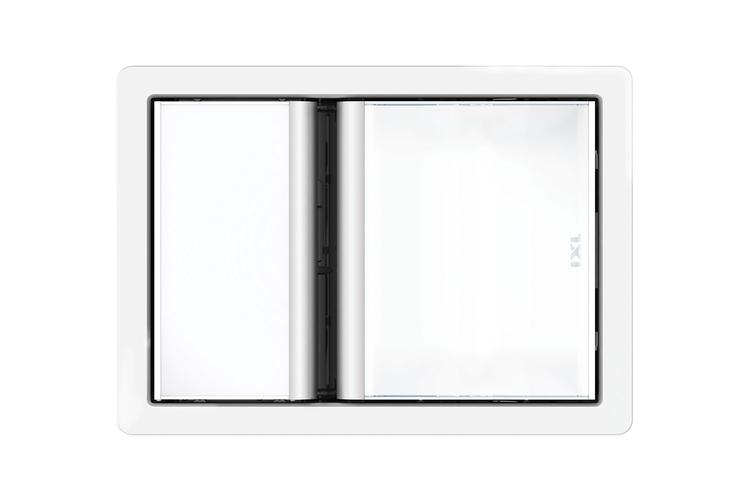Before you start cleaning, you have to get rid of the conditions that encourage the growth of mould in the first place. Mould loves moisture, which is why the bathroom is such a growth hotspot. Installing an exhaust fan will remove the steam that’s a big part of the problem.
It’s important that any new fan is vented to the outside. Ceiling fans that just go up into the roof cavity will just shift the problem elsewhere and possibly make the mould infestation worse.
Tastic Luminate is part of IXL’s premium bathroom range, featuring strong airflow extraction, dimmable LED cool/warm white lighting and Halo Heat technology auto cut-off heat lamps.
IXL Ducted Ventflo Exhaust Fan & Light features strong airflow extraction, an energy-saving LED panel and is suitable for above-shower installation in bathrooms, laundries and toilets.
Give all surfaces in your bathroom a good scrub and wipe over to kill the mould.
Use a solution of 4 parts white vinegar to 1 part water. Rinse the cloth or scrubber in a second bucket of the solution after you’ve cleaned an area to ensure you don’t just spread the problem elsewhere.
For more mould busting cleaning tips, try:
Painted surfaces that have been stained with mould will still show signs of it no matter how much you clean. The only way to freshen up is to repaint the walls and ceiling. It’s important you use a stain blocking primer first otherwise the stains will bleed through the finished job.

Use a paint that’s specially designed for bathrooms for the final coats. For added protection, invest in a mould-resistant paint, like Dulux's Precision Stain & Mould Blocker or Rustoleum's Perma-white mould and mildew-proof interior paint.
Martina GemmolaOnce mould gets into grout it is virtually impossible to get it out. The only way to completely get rid of mould is to re-grout the affected area. Use a grout remover to scrape it out until there is no sign of staining.
Remove all the dust then mix up the new grout and spread it over the walls making sure it gets right into the joint. Use a damp sponge to remove as much of the excess as possible, rinsing it frequently. When it’s dry, polish the tiles with a cloth.
Another place where mould can’t be fully removed is in the silicone around the bath and basin. To replace it, cut out the affected area and pull out as much as you can. Use a razor blade to scrape off any silicone that’s left over or use a chemical silicone remover.
To apply new silicone, first mask either side of the joint with masking tape so you don’t get it where it’s not needed. Squirt silicone into the join then smooth to the edges of the tape with a finger dipped in soapy water. Remove the tape before the silicone forms a skin.
Apart from reducing the amount of moisture in your bathroom, the only other way to prevent the return of mould is regular cleaning.
Mould feeds on organic matter left over from all you do in the bathroom. Removing this will take away its food source and make sure it’s gone for good.
You might also like:
8 best ways to dry your clothes quickly
Cleaning vinegar: using vinegar to clean your home
The best mould removal products